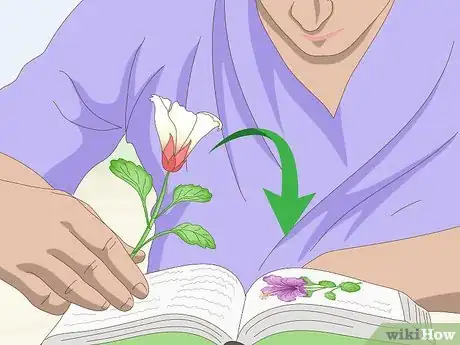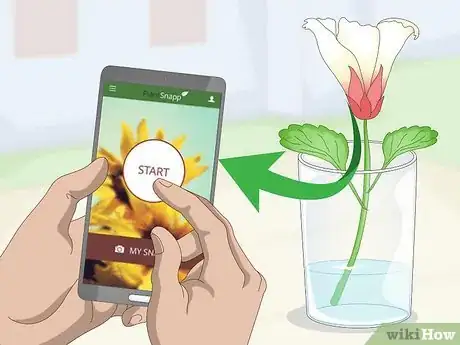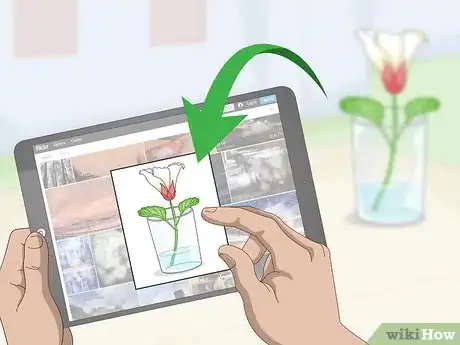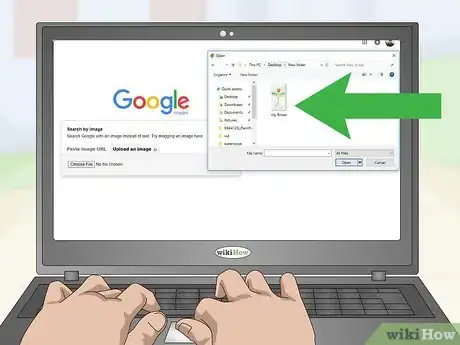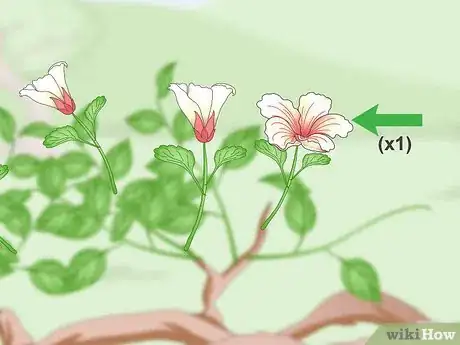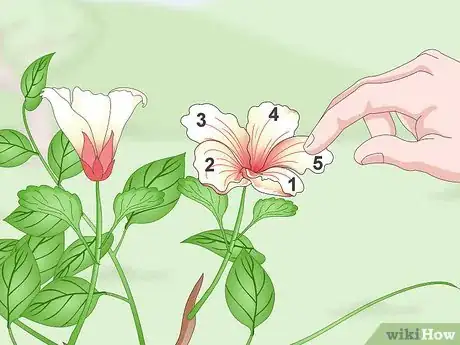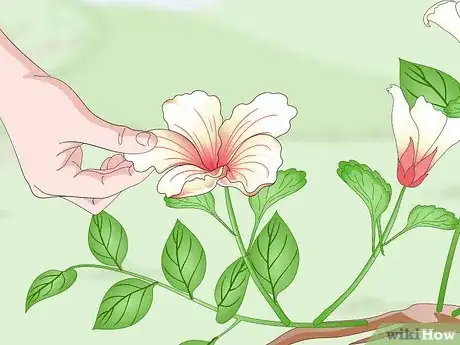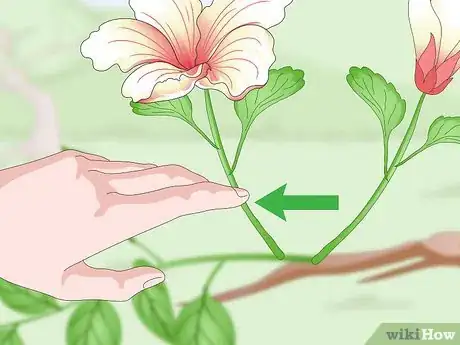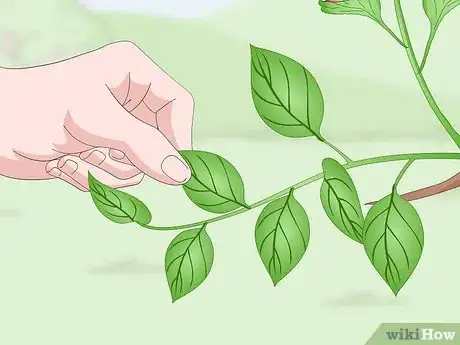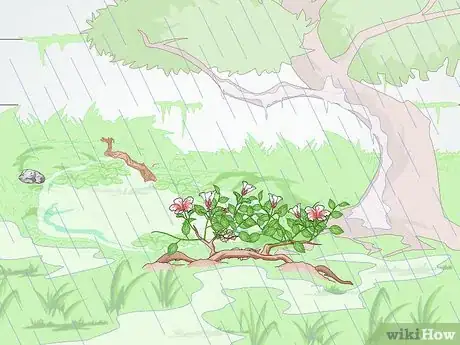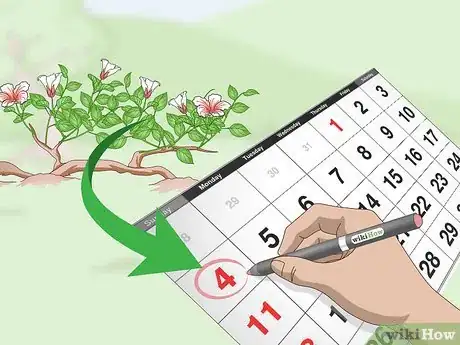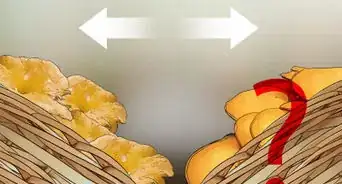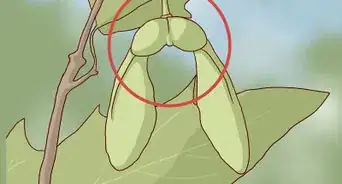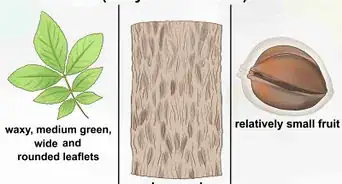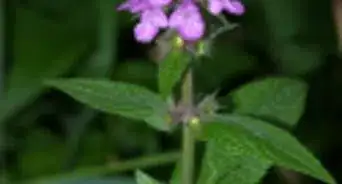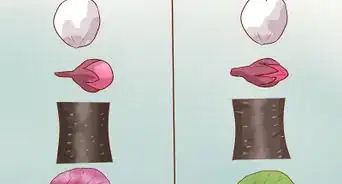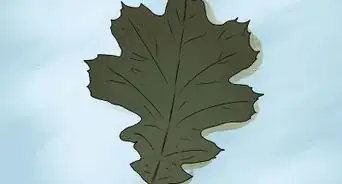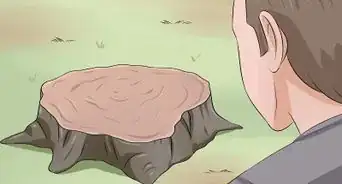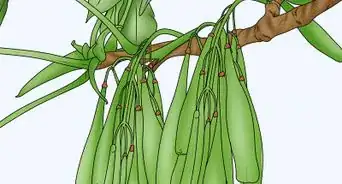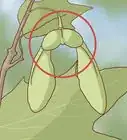This article was co-authored by wikiHow Staff. Our trained team of editors and researchers validate articles for accuracy and comprehensiveness. wikiHow's Content Management Team carefully monitors the work from our editorial staff to ensure that each article is backed by trusted research and meets our high quality standards.
This article has been viewed 43,188 times.
Learn more...
Identifying flowers can be a fun hobby and a great way to learn more about the natural world. You may want to identify flowers blooming in your garden or sprouting up along a hiking trail. Online tools like apps and plant databases are great resources if you need more guidance on the name and type of a flower. Examining the physical characters of the flower, from the petals to the leaves, as well as where and when you found it, can also be helpful. With the right approach, you'll be able to identify flowers in no time.
Steps
Using Identification Tools
-
1Look the flower up in plant database or dictionary. Referring to a plant database, dictionary, or encyclopedia can help you narrow down the name and genus of the flower. Use an online resource to look up the flower based on its physical characteristics and location. You can also access a print dictionary or encyclopedia at your local library or bookstore to look up the flower.
- Access an online plant dictionary here: http://www.bhg.com/gardening/plant-dictionary/.
-
2Use an app to identify the flower. If you have a smartphone or a computer, you can download apps that identify flowers, such as PlantSnapp, PlantNet, and FlowerChecker. You will need to provide photographs of the flower to identify it with the app.[1]
- An app may be ideal if you want to identify flowers while you are out on a hike or on a walk on a trail, as you can snap a photo of it and download it onto the app on your smartphone for a quick identification.
Advertisement -
3Post a photo of the flower on Flickr for more information. If you are stumped on the identity of the flower, and a dictionary or app does not help, try putting a photo of the flower up on an image sharing site like Flickr. The online community may then be able to help you identify the flower using research and expert knowledge.[2]
- Online forums for flower identification can also be a good option if you need help identifying a flower.
-
4Try reverse image searching a photo of the flower. Take a photograph of the flower on your smartphone or computer and then place the photograph in the search bar on your browser. Search the image online to see if you can find any matches on the internet. This can then help you identify the flower.
- You can reverse image search on your Desktop by going to: https://images.google.com
- To reverse image search on your mobile phone, try: https://reverse.photos
Looking at the Physical Characteristics of the Flower
-
1Notice the overall height of the plant. Start by measuring the height of the plant the flower is attached to. Most flowers will bloom attached to the stem of a plant. Use a measuring tape or ruler to determine the height of the plant from top to bottom. Some plants are as small as 1 foot (0.30 m) or less and as tall as 2 feet (0.61 m) or more.[3]
-
2Check the width of the flower. Measure how wide the flower is in inches or centimetres with a ruler or measuring tape. Measure across the flower, from petal to petal. Some flowers can be as small as 1⁄8 inch (0.32 cm) and as large as 2 inches (5.1 cm) or more.[4]
-
3Look at how the flower is arranged on the stem. You may come across just 1 flower on the stem, several flowers on 1 stem, or a cluster of flowers on 1 stem. Some flowers appear in an umbel, where they fall in an umbrella-like cluster from one point on the stem.[5]
-
4Count how many petals are on the flower. The number of petals will help to determine the flower type. All flowers will have at least 3 petals and may have as many as 7-10 petals.[6]
- You should also look at the shape of the petals. Some flowers will have petals that are all shaped like tubes. Other flowers may have petals that are lopsided, clipped, or not symmetrical.
-
5Identify the color of the petals. The petal color on the flower can range from pure white to whitish with flecks of other colors. The petals can also be pink to red, yellow to orange, or blue to purple. Some flowers have petals that are brownish or greenish in color.[7]
- It may be tricky to identify the color of the petals if there are variations or several different colors. Pick out the main or dominant color on the petals to help identify the flower.
-
6Check the texture and shape of the stem. The stem of the flower can tell you a lot about it. Some stems will creep or twist around other objects or along the ground. Other stems will extend straight up from the earth and have a square shape.[8]
- The stem of the flower may also appear hairy or spiny in texture. It may have thorns or pricks that extend from the stem.
- Some stems will have a slick or smooth texture that appears shiny or hard.
-
7Check the shape, size, and arrangement of the leaves. Notice if the leaves have a smooth edge or a jagged leaf edge. Some flowers have leaves that have 4 or more teeth around the edge, spread out 1 inch (2.5 cm) or more apart. Some flowers will have deep cuts on the edges of the leaves.[9]
- You should also look at whether there is 1 leaf on each stem that is equally wide as it is long or 1.5 to 5 times as wide as it is long. Some flowers have 1 leaf on the stem that is 5 times as long as it is wide.
- Notice the arrangement of the leaves on the stem. Check if the leaves alternate on either side of the stem or appear on the opposite side of one another. Some flowers will have leaves that extend in groups of 3 from the stem.
-
8Use this information to identify the flower in a plant database or encyclopedia. Once you have compiled the physical characteristics of the flower, you can then plug this information into an online plant database or encyclopedia. You can also look up the flower in a print encyclopedia on plants to identify it. All the physical characteristics of the plant, taken together, should make it easier for you to determine the name and type of the flower.
Identifying the Flower’s Location and Bloom Time
-
1Use the climate and terrain to determine the flower type. Think about what the weather is like and what the area looks like where you found the flower. Factor in the characteristics of the soil and the surrounding foliage. These details can help you determine the flower type.[10]
- For example, you may notice that the flower is growing in a wet, tropical climate surrounded by other tropical plants in a swamp. Or you may notice the flower is growing in a hot, dry climate that has rocky soil and surrounding foliage that is woody and dry.
-
2Factor in the geographic location to identify the flower. Geographic location can also help you identify the flower, especially if you’d like to determine if the flower is native to the area. Many flowers flourish naturally in areas where they originated or have grown for many years. Flowers in a garden can be cultivated to grow, even if they are not native to the area.
- You can find a list of flowers by their native country here: https://www.theflowerexpert.com/content/aboutflowers/national-flowers.
-
3Find out the time of year the flower bloomed. Identify the season when the flower came into bloom, such as spring, summer, or fall. Most flowers bloom in the spring. Try to narrow it down to the month the flower was in full bloom for a more accurate identification.
- For example, you may notice the flower blooming in late spring or the petals opening in early summer.
-
4Identify the flower in an online database or encyclopedia using this information. Once you have identified the climate, terrain, and location of the flower, as well as the time it bloomed, refer to an online plant database or encyclopedia. Use the information to help you identify the name and type of the flower.
- You can also use print encyclopedias to identify the flower.
References
- ↑ https://www.gardenista.com/posts/diy-identify-leaves-and-flowers-theres-an-app-for-that/
- ↑ http://www.realtimerendering.com/flowers/flowers.html
- ↑ http://www.realtimerendering.com/flowers/flowers.html
- ↑ http://www.realtimerendering.com/flowers/flowers.html
- ↑ http://www.realtimerendering.com/flowers/flowers.html
- ↑ http://www.realtimerendering.com/flowers/flowers.html
- ↑ http://www1.biologie.uni-hamburg.de/b-online/e02/02.htm
- ↑ http://www.realtimerendering.com/flowers/flowers.html
- ↑ http://www.realtimerendering.com/flowers/flowers.html
